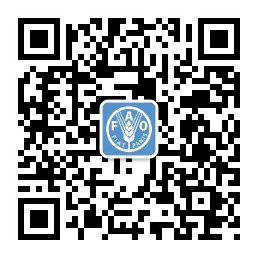Building digital educational repositories for agriculture: The AgLR tool
While there is a wealth of open source software repositories for bibliographic records, such as DSpace, Eprints etc., this is not the case for the educational ones; a short research showed that there are only a few solutions for this purpose and most of them are proprietary ones, commercial software etc. I am aware of a case where a Dspace installation was used as an educational repository but still this seems to be an exception to the rule.
In the context of the Organic.Lingua ICT-PSP project, we decided to build a new learning repository tool, in order to meet the requirements collected by the stakholders/agricultural learning community, focusing mostly on multilinguality aspects as well as the automatic update of the Organic.Edunet AP and the ontology. This tool should be based on open-source software, always use the latest version of the Organic.Edunet ontology, it should support automatic translation of metadata (domain-specific translation, proviing more accurate results) and other useful functionalities and adaptations for the agricultural stakeholders. Well, after three years of work for the Organic.Lingua project, this tool is here: named Agricultural Learning Repository tool (AgLR), its main features are listed below:
- Built on the open-source Omeka platform;
- Uses the latest version of the Organic.Edunet IEEE LOM AP for the creation of metadata records;
- Uses the latest version of the Organic.Edunet ontology for the classification of the learning resources;
- The AgLR took is connected to the MoKi tool used for the management of the ontology through the ontology service API;
- It features a user interface available in ten (10) languages; additional languages can be easily added using an online form;
- Supports the automatic translation of metadata (Title, Description and Keywords) in ten (10) languages);
- Supports the "Suggest Metadata" functionality, for automatically extracting metadata from HTML pages;
- Supports the Template functionality for minimizing the time needed for the creation of metadata records sharing identical information in metadata fields;
- It is fully compliant with the OAI-PMH standard for exposing metadata of each collection/set through a unique target;
- It supports ingestion of metadata in the form of XML files.
Of course such a tool needs to be easily accessible by anyone, anywhere, at any time, with only the minimum effort to set up, so the obvious question: How can one access, evaluate and actually use the AgLR tool?
 The answer is that the agINFRA FP7 project is building the infrastructure needed for meeting the requirements of the agricultural communities, such as the educational, research and bibliographic. This grid- and cloud-based infrastructure includes several components and tools which aim to facilitate access to agricultural knowledge and information.
The answer is that the agINFRA FP7 project is building the infrastructure needed for meeting the requirements of the agricultural communities, such as the educational, research and bibliographic. This grid- and cloud-based infrastructure includes several components and tools which aim to facilitate access to agricultural knowledge and information.In this context, the agINFRA project is providing a free version of the tool, which you may access at:
http://212.189.145.247/oe/admin/users/login using the following credentials:
username: aglrdemo / password: aglrdemo
If you decide to use the AgLR tool, please take some time to provide us with your feedback using this online evaluation form - it will not take you more than 5 mins to complete and at the same time you will greatly help us to further improve the tool!
In the meantime, we are planning a series of webinars for the agricultural learning resources and tools, including one for the AgLR tool, so stay tuned!
You can read the full blog post at the Agro-Know blog.


